Instant Pot bean stew with sausage (kobasica) is a classic Balkan stew. Also known as pasulj or grah, this hearty and tasty soup is the perfect comfort food for cold days. This is a quick, no-soak, no-roux version with the same amazing taste.
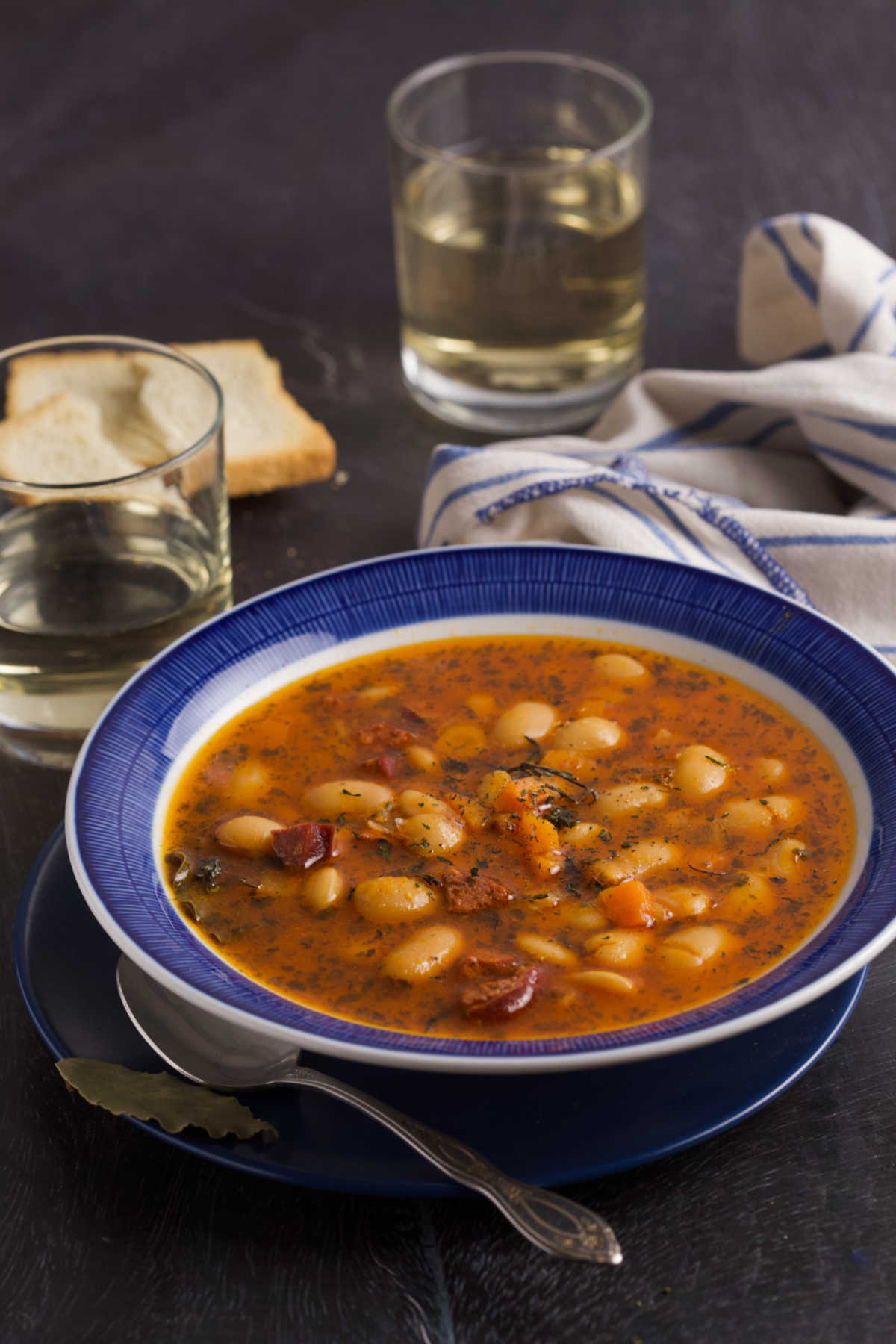
Jump to:
Background
Bean soup is one of the best Balkan stews. Known as pasulj or grah, this soup recipe can be easily adjusted to accommodate every type of diet.
These buttery, soft, flavorful gems are a typical winter dish that, when you combine it with fermented cabbage and a slice of steaming homemade bread, takes you right back to your childhood snow days.
Originally made over a fire pit, today's grah is usually made on the stovetop. As cooking it can take forever, we decided to make an Instant Pot bean soup version. (An upgrade to our pressure cooker recipe from before.) However, you can find the stovetop version here as well.
This easy bean soup can be made with most types of dry beans, and enriched with most types of meat. We opted to make it into a sausage soup simply because we like the spiciness.
Why You'll ❤️ This Recipe
Instant Pot bean soup has everything you'll appreciate:
- it's quick from start to finish,
- beans require no soaking, and
- we've thrown in some yummy sausage.
Shall we?
Ingredients
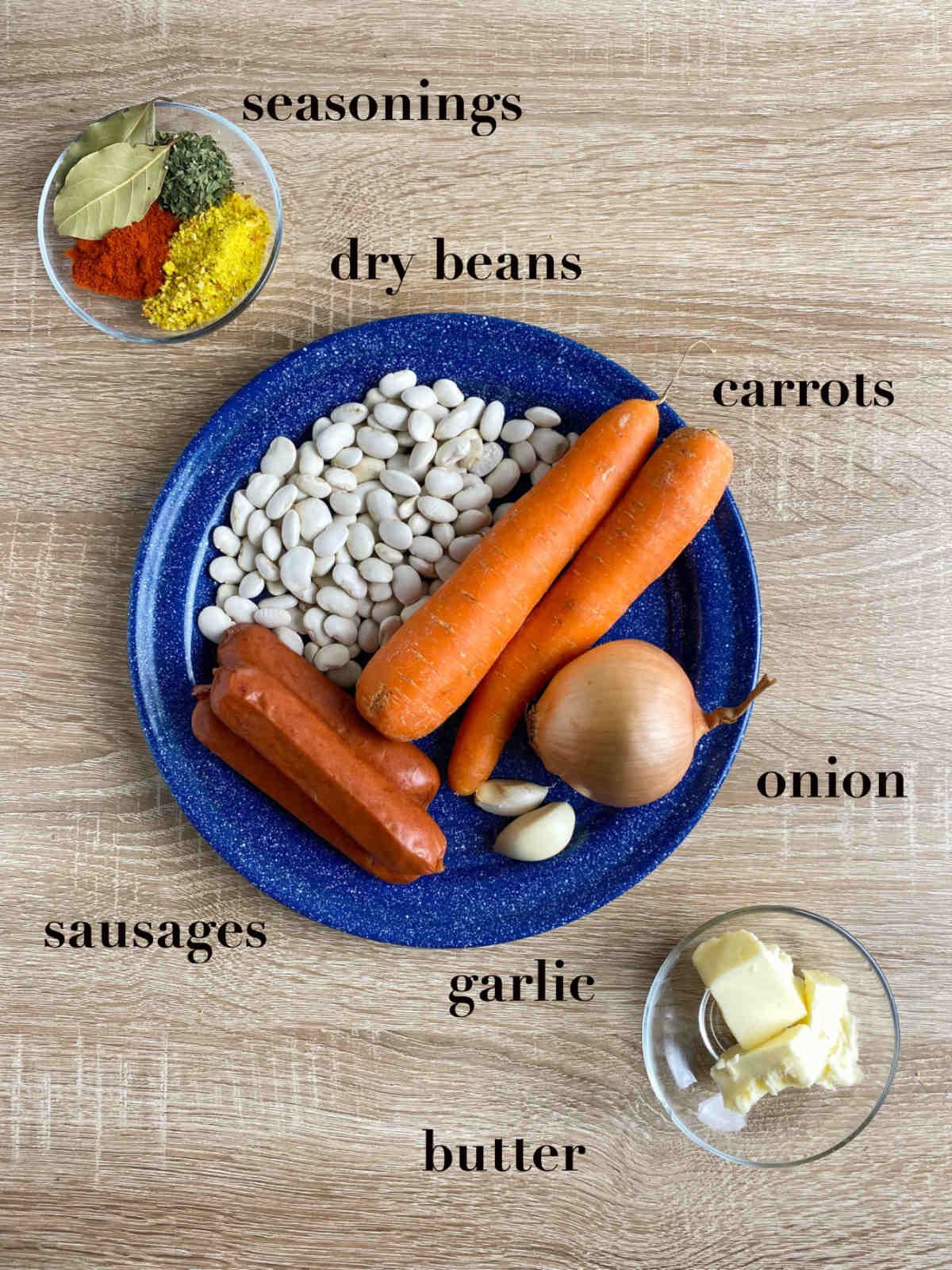
- Dry beans: for this particular Instant Pot bean soup we love to use white beans like cannellini, navy, or great northern. Other great options are kidney beans, black beans, cranberry beans, pinto beans, and black-eyed peas. Avoid fava, chickpeas, mung, soybeans, and any type of canned beans.
- Yes, the beans absolutely must be dry. No worries though! There is no need to soak these beans. We've got the trick to get them ready in minutes, without soaking. - Sausage (kobasica): most types of sausage will work like chicken, turkey, beef, pork, mild or spicy. As ultimately this is a sausage soup, the taste is somewhat determined by the sausage, so choose the one the entire family will like.
- Other meats you can use: bacon, ham, dried (smoked) beef, ham hock, and ribs. Avoid: poultry.
- Butter: can be exchanged with sunflower, vegetable, or coconut oil.
- Seasonings: parsley, bay leaves, bouillon cube (or stock powder), and pepper (or peppercorn). Paprika is optional. If you choose it, the taste should complement the sausage. Substitute with your own spice mix.
Instructions
- Instant pot:
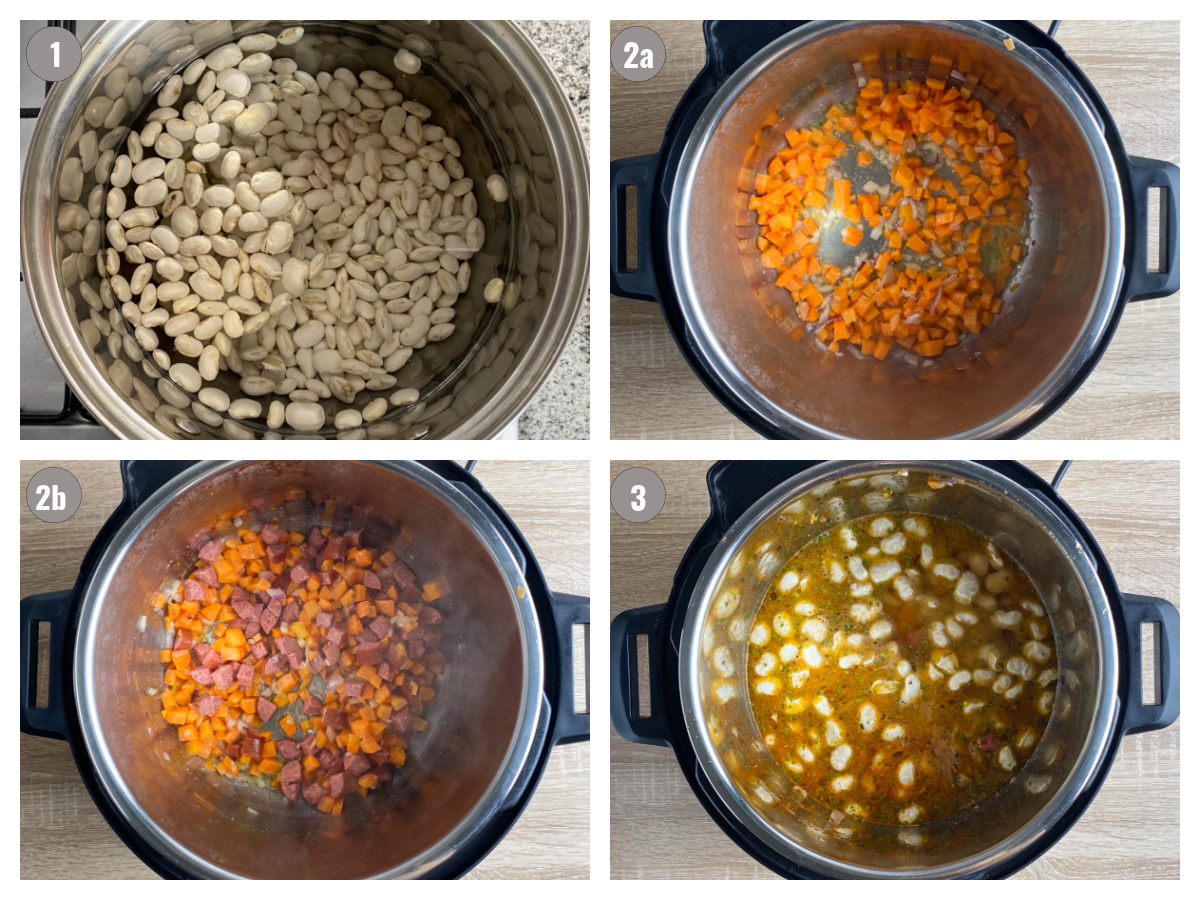
Step 1. In a pot cover beans with water and boil for 15 minutes on the stovetop. Discard water, wash the beans and set aside.
Step 2. Heat up butter. Sauté onion, garlic, and carrot. Add sausage and continue sautéing until it browns. Cancel sautéing.
Step 3. Add beans, seasonings, and water. Close the Instant Pot lid and pressure cook for 30 minutes. Release pressure and check that beans are soft and buttery. If they're not, pressure cook them for another 10-20 minutes, release the pressure and serve.
- Stovetop
Step 1. In a pot cover beans with water and boil for 15 minutes. Discard water, wash the beans and set aside.
Step 2. Heat the butter. Add onion, garlic, and carrot and sauté. Add sausage and sauté until it browns. (Add just a little bit of water if necessary.)
Step 3. Add beans, seasonings, and 4.5 - 5 cups of water (1 to 1.1l). Partially put the lid on, stir and cook on low for 90-120 minutes, or until the beans are buttery and soft, and the soup is thick. (Don't worry if the cooking time goes over, even by 30-60 minutes. This is one of those long, slow-cooking dishes.)
Handling
Serving: serve warm. It goes well with all types of fermented salads and bread. Keep leftovers in a sealed container in the refrigerator for up to 3 days, or in a really cold place (like terrace or balcony in the winter). This is one of those dishes that tastes better a day or two later.
Reheating: reheat on the stovetop, or use your preferred method. Add a little bit of water to the soup if it's too thick. (We prefer reheating it on the stovetop because it reheats more evenly this way.)
Freezing: after the soup cools down, portion it out into freezer-friendly containers (or bags), and then freeze for up to 2-3 months. When ready to eat, thaw it for a little bit at room temp (or overnight in the fridge), and then warm up following the reheating instructions. Add water as necessary.
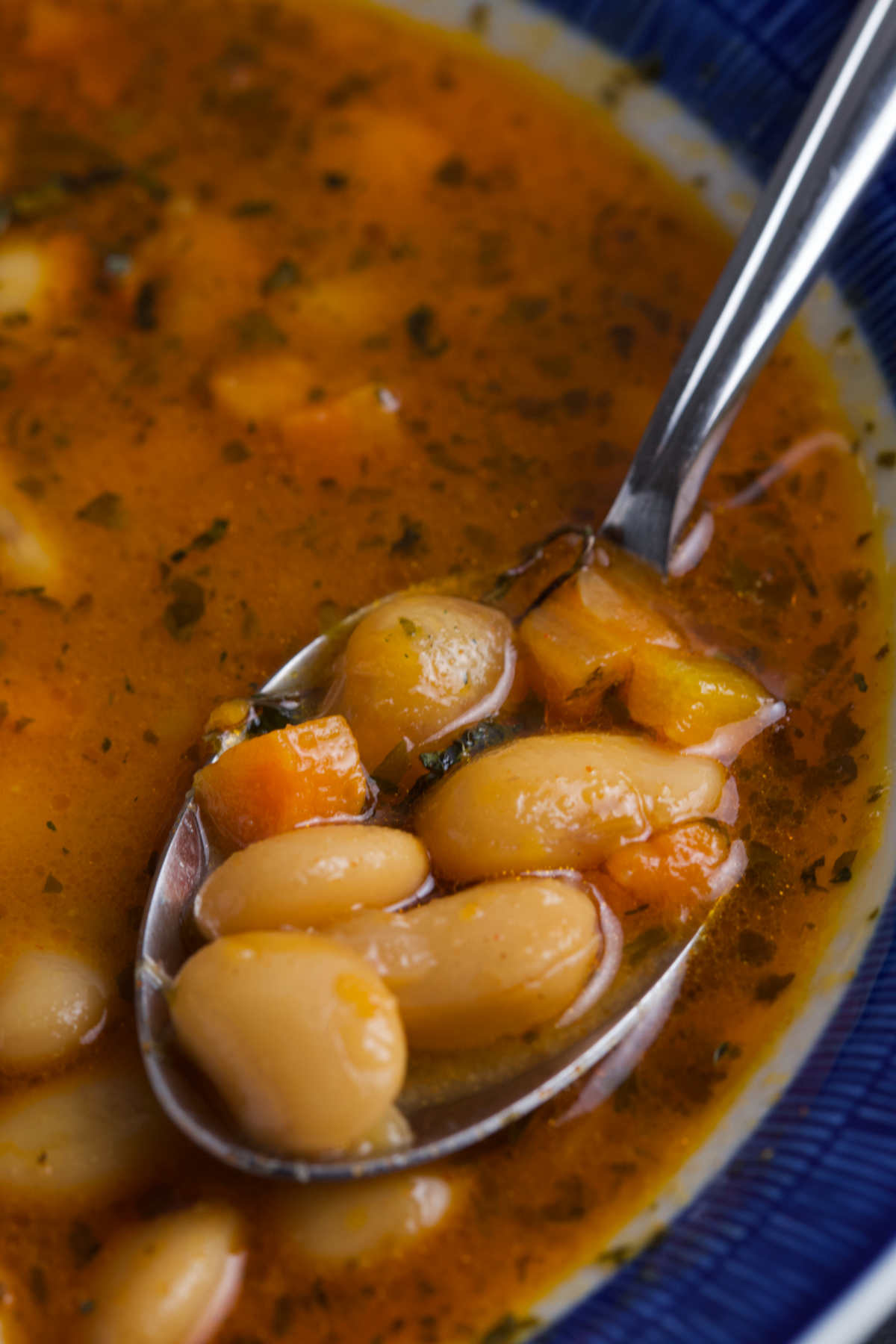
Recipe FAQs
Absolutely. Because we'll be using the pressure cooker option, your best bet is to use dry beans.
No soaking is needed! All you do is boil beans for 15 minutes ahead of cooking.
If the beans are still hard after the first 30 minutes in the Instant Pot (assuming you boiled the beans first), pressure cook them for another 10-20 minutes.
If you're cooking on the stovetop you'll be able to determine the softness of the beans as you cook, and adjust cooking time as needed.
The older the beans are, the tougher they are. If you can, buy them from a farmer's market where you can find out when they were dried.
Keep in mind that our no soak Instant Pot bean soup recipe is a quick fix. Ideally, it should work, but sometimes the beans end up tough no matter what.
If nothing works, soak the beans overnight the next time you make them. Yes, it takes more planning, but you're less likely to have tough beans after all the effort.
Sure. However, because it takes a while for the pressure to build up in the Instant Pot, it's quicker to boil them on the stovetop.
No. Beans (and this includes today's bean and sausage soup) cause gas and indigestion when consumed in the evening, or at night. (Our rule is not to eat them after 6PM.)
More Beans
- Baked Romano Beans are an amazing alternative to green beans.
- Quick Tavče Gravče, or the old school Tavče Gravče.
- And, there is, of course, the other Ham and Bean Soup Recipe we love.
Thoughts?
If you made our Instant Pot bean soup recipe and liked it, please consider giving it a ⭐️⭐️⭐️⭐️⭐️ (5-star) rating. This helps others find the recipe more easily!
Also, feel free to leave a comment (I read each one!), and don't forget to tag a photo #balkanlunchbox, or us @balkanlunchbox, on IG.
Prijatno and bon appetit!
(Adapted from a recipe by S. Hajdarević)
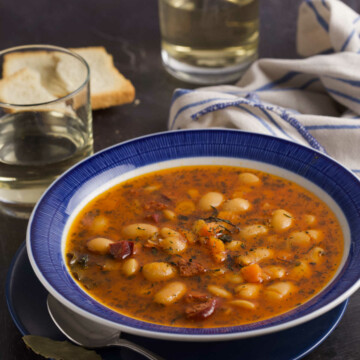
Instant Pot Bean Soup (with Sausage) [No Soak]
Ingredients
- 10.5 ounces dry beans navy, red kidney, cannellini or other
- 2 tablespoons butter or sunflower, coconut or vegetable oil
- 1 onion medium, diced
- 2-3 garlic cloves minced
- 2 carrots medium, minced
- 4-6 ounces sausage (2-3 medium-sized sausages) pork, turkey or chicken, diced or cut into rounds
- 1 tablespoon parsley minced, fresh or dry
- 1 tablespoon paprika chili or mild
- 1 bouillon cube or 1 tablespoon Vegeta, or 1 tablespoon stock powder
- ground pepper to taste or peppercorn
- (Optional) 1 bay leaf
Instructions
Instant Pot
- In a deep pot, cover beans with plenty of water and bring to a boil on high. Lower to medium and boil for 15 minutes. Discarding the water, strain and wash the beans and then set them aside.
- Select sauté on your Instant Pot and heat up the butter. Add onion, garlic, and carrot. Sauté until soft, occasionally stirring. Add sausage, and sauté for 5-7 more minutes, or until the sausage browns. (Add just a little bit of water if necessary.) Cancel the sauté option.
- Add beans, seasonings, and 4.5 - 5 cups of water (1 to 1.1l). Stir everything really well and secure the lid on the Instant Pot. Pressure cook on high for 30 minutes. (It will take about 10-15 minutes for Instant Pot to pressurize before the cooking begins.) After the time is up, release the pressure naturally (about 20 minutes) or use the quick release method (about 2-5 minutes). The float valve will drop and the lid will unlock and open when all of the pressure is out.* The beans should be buttery and tender. If the beans are tough or crunchy seal the lid one more time and pressure cook for another 10-20 minutes until they are perfectly soft.
Stovetop
- In a deep pot, cover beans with plenty of water and bring to a boil on high. Lower to medium and boil for 15 minutes. Discarding the water, strain and wash the beans and then set them aside.
- Dry your pot, return to the stovetop, and heat the butter on medium. Add onion, garlic, and carrot. Sauté until soft, occasionally stirring. Add sausage, and sauté for another 5-7 minutes, or until the sausage browns. (Add just a little bit of water if necessary.)
- Add beans, seasonings, and 4.5 - 5 cups of water (1 to 1.1l). Stir everything really well and put the lid on ⅔rds of the way. Cook on low for 90-120 minutes, or until the beans are buttery and soft, and the soup is thick. (You may need more time. Don't worry if the cooking time goes over even by 30-60 minutes. This is one of those long, slow-cooking dishes.)
Serving/ Storing/ Freezing
- Serve warm. Keep leftovers for up to 3 days in the fridge. (Bean stews are always better a day later!) If freezing wait for it to cool down and then transfer the freezer. Freeze for up to 2-3 months. Thaw, then heat up using your preferred method. Add some water or broth if it's too thick.
Video
Notes
- Video
- Instant Pot
- Cooking Time
- Ingredients
- General Notes

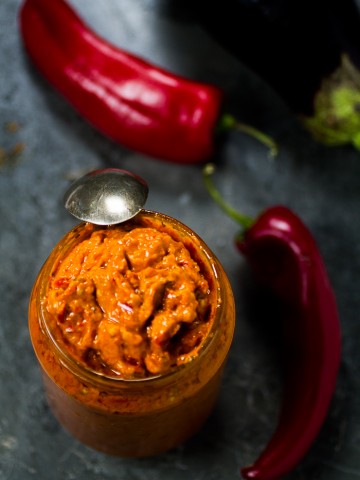
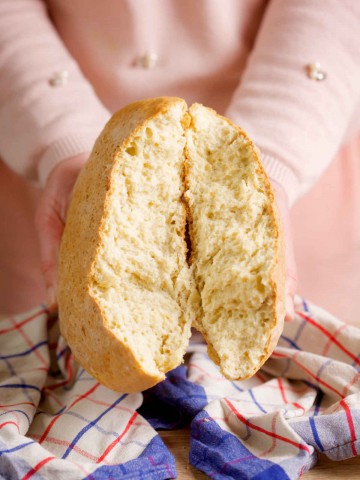
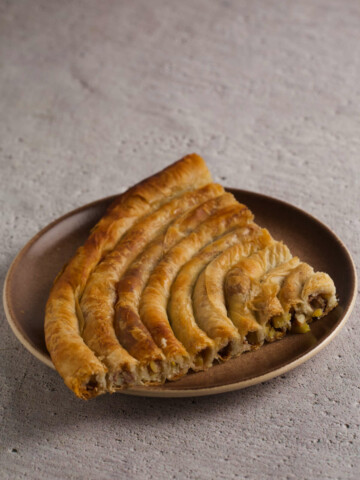
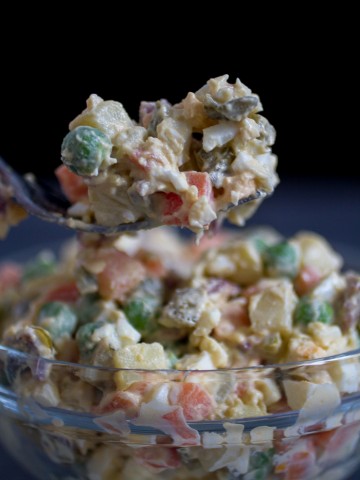

Natasha @ Salt and Lavender says
This looks so tasty!! Reminds me of food I had growing up 🙂
Aida says
Thanks Natasha, and welcome to the blog! I look forward to checking yours out as well. 🙂
Sajra says
Hi Aida,
can I use canned beans instead? I don't have a pressure cooker, could I still use a regular pot?
Aida says
Hi Sajra,
You can use a regular pot but cook the beans a longer period of time, about 60-90 minutes. You can check to see whether it's done by testing the beans - they'll soften when the stew is done. I've never used canned beans. Dry ones that have been soaked beforehand are generally better. They take longer to cook, so the flavors of the kielbasa and beans really come together. If you use canned beans it won't take as long to cook, but the taste might not be as deep and flavorful.